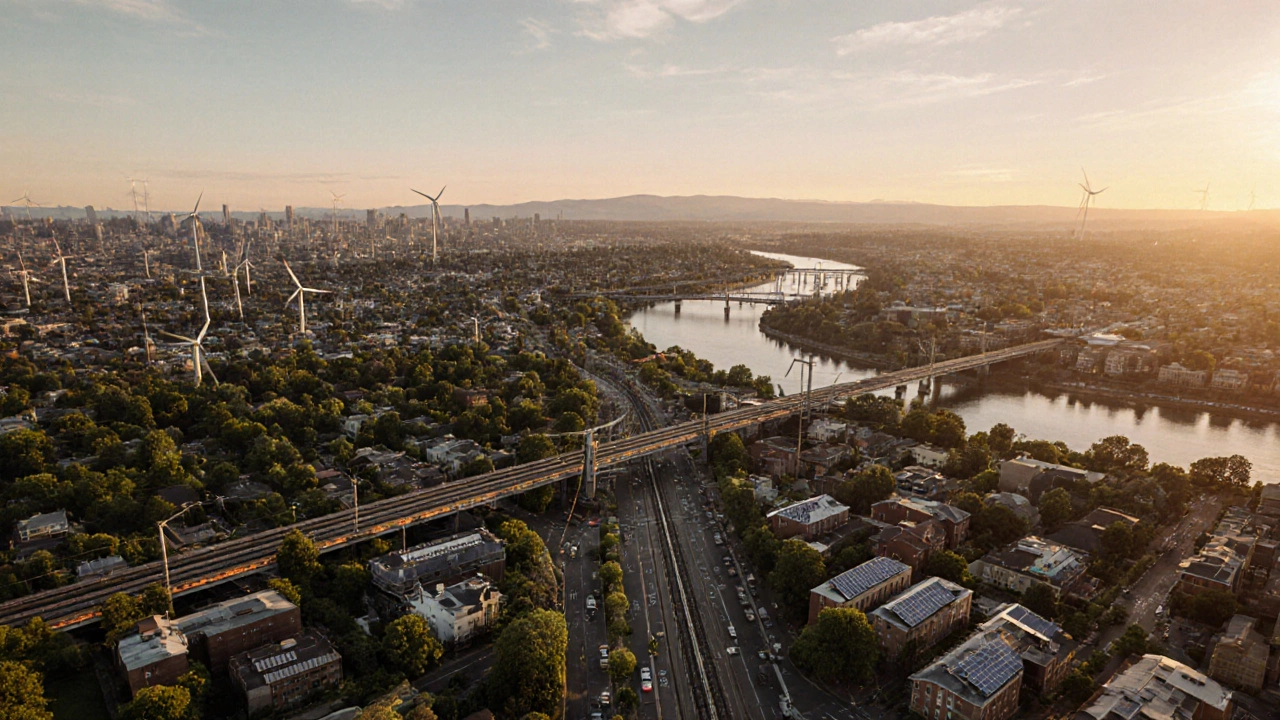Green Urban Living: A Practical Guide
When exploring green urban living, the practice of blending sustainable design, energy efficiency, and nature into city homes and neighborhoods. Also known as eco‑urban living, it aims to lower carbon footprints while keeping city life comfortable. Along the way you’ll meet eco‑friendly house, a residence built with low‑impact materials and systems that cut energy use, green building, construction methods that prioritize renewable resources and waste reduction, and the Passive House, a rigorous standard that guarantees ultra‑low energy consumption. Understanding how these pieces fit together helps you make smarter choices for a sustainable city lifestyle.
Why Green Urban Living Matters
City dwellers account for the majority of energy use worldwide, so shifting the built environment toward greener practices has a ripple effect. A well‑designed eco‑friendly house can slash heating bills by up to 90 % compared with traditional construction. Green building materials, such as reclaimed timber or low‑embodied‑carbon concrete, reduce the emissions tied to manufacturing. When a Passive House meets its airtight envelope and high‑performance insulation, occupants enjoy consistent indoor comfort without cranking the thermostat. These benefits ripple into lower municipal energy demand and healthier neighborhoods.
Beyond cost savings, green urban living improves air quality and mental wellbeing. Adding rooftop gardens, vertical greening, or community trees introduces fresh oxygen and reduces urban heat islands. Studies from UK cities show that every 10 % increase in green space can lower local temperatures by up to 2 °C. For renters and homeowners alike, these natural elements create inviting outdoor spots and encourage active lifestyles, which in turn boost property values.
Implementing sustainability doesn’t require a full‑scale overhaul. Simple upgrades—like installing LED lighting, smart thermostats, or low‑flow fixtures—fit into most budgets and still deliver measurable reductions. The key is to view each improvement as a step toward a larger ecosystem of green building practices. When you combine modest retrofits with larger projects, such as adding solar panels or upgrading to triple‑glazed windows, the cumulative effect rivals that of a brand‑new eco‑friendly house.
Policy and incentives also play a big role. Many UK local councils offer grants for insulation, heat‑pump installation, or renewable energy systems. The Green Homes Grant, for instance, covered up to 35 % of eligible costs for qualifying projects. Understanding which programs apply to your property can turn a seemingly pricey upgrade into an affordable investment, shortening the pay‑back period and accelerating your move toward green urban living.
Designing for sustainability starts with orientation and layout. Positioning living spaces to capture natural light reduces the need for artificial lighting during the day. Likewise, strategic window placement supports passive solar heating in winter while shading devices block excess heat in summer. This design approach, a core principle of green building, dovetails with the Passive House standard, which stresses meticulous heat‑loss calculations.
Materials matter just as much as energy. Choosing low‑VOC paints, recycled insulation, or sustainably sourced timber minimizes indoor pollutants and supports a circular economy. When you source locally, you also cut transportation emissions—a hidden but significant factor in a building’s overall carbon footprint.
Water conservation is another pillar of green urban living. Installing rainwater harvesting systems, dual‑flush toilets, and drip‑irrigated gardens can slash water bills by 30 % or more. In drought‑prone regions, these measures become essential for long‑term resilience. Pairing water‑saving tech with smart sensors lets you monitor usage in real time, empowering occupants to act quickly if consumption spikes.
Technology bridges many of these improvements. Home energy management platforms aggregate data from solar panels, batteries, and smart appliances, allowing you to optimize load shifting and reduce peak demand charges. Integrating these tools with electric vehicle chargers ensures you’re not just greener at home but also on the road.
Community involvement amplifies individual effort. Neighborhood composting schemes, shared solar farms, or bulk‑purchase programs for eco‑friendly building supplies can lower costs for everyone. When residents collaborate on greening projects—like planting pollinator gardens—social ties strengthen, creating a supportive network that sustains momentum.
While the benefits are clear, challenges persist. Upfront costs, limited contractor expertise, and regulatory hurdles can stall progress. However, the downsides of green buildings are becoming easier to manage as the market expands. Training programs for sustainable construction are popping up, and many jurisdictions are streamlining permitting for eco‑certified projects.
In short, green urban living is a multi‑layered approach that blends smart design, efficient technologies, and community action. Whether you’re buying a new eco‑friendly house, retrofitting an older flat, or simply adding a few green touches, each step moves the city toward a healthier future.
Below you’ll find a curated collection of articles that dig deeper into each of these topics—from cost breakdowns of eco‑friendly houses to step‑by‑step guides for building affordable green homes. Use them as a toolbox to plan, execute, and enjoy your own sustainable urban retreat.
Which U.S. City Leads in Eco-Friendliness?
Discover which American city tops the eco‑friendly ranking, why Portland, Oregon leads, and how to experience sustainable travel across the U.S.
- Oct, 24 2025
- 0 Comments
